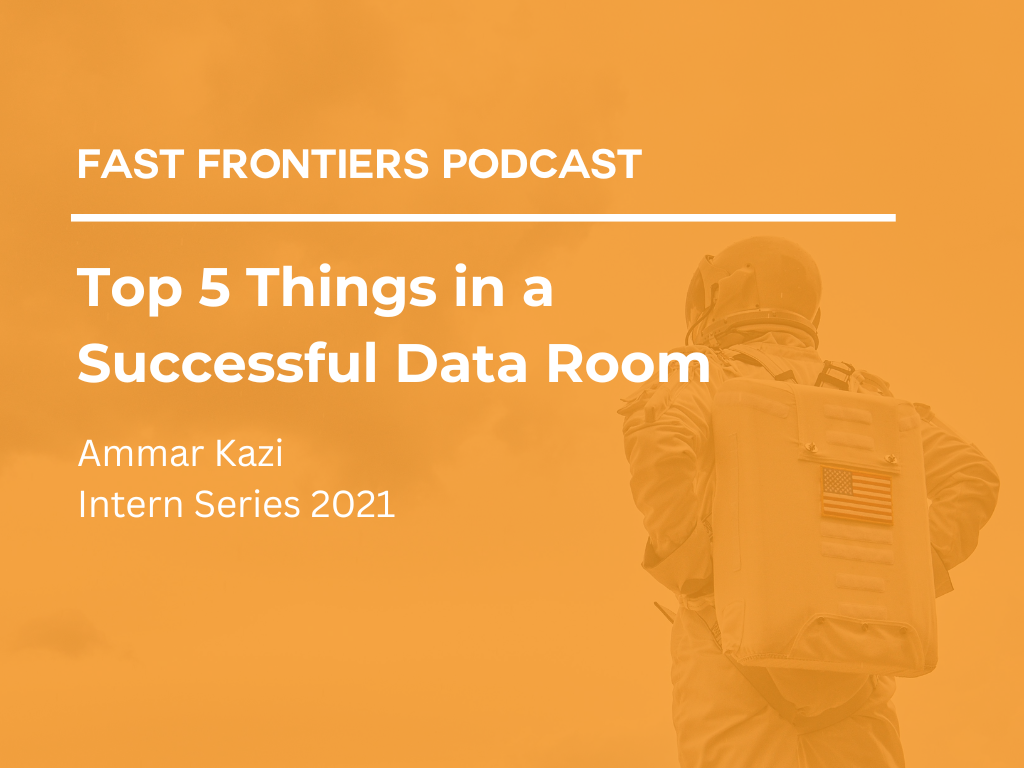The data room is your chance to control the narrative of your company.
Traditionally, it would be a secure space full of documents that could be supervised closely by a business — think secured and guarded. The room would include confidential documents requested by a third party, and only authorized people would have access. Today, many organizations are switching over to virtual data rooms to execute more secure deals faster.
But what should be included? A successful data room should showcase your company’s past successes, challenges it has faced, and plans.
In this article, we will share the first five things we look for when we look at a data room.
1. Financial Model
A strong financial model doesn’t just illustrate numbers; it shows an understanding of the key levers of growth. Growth should be exciting but not unrealistic. Additionally, it’s important that the key assumptions are believable and that a path towards achieving them exists. It’s important to realize that unit economics (CAC, LTV, churn, payback period, etc.) are not entirely about numbers but rather your approach to managing them. Any other metrics and dashboards used to monitor the business are also helpful. Be clear about your underlying assumptions. This sometimes hidden data can be most revealing!
2. Revenue Pipeline: Pipeline = Process
The pipeline offers a lens into the future of the business. Learning about the pipeline facilitates a sales/go-to-market discussion. One such discussion is shifting sales from founder-led-selling to sales-teams-led-selling (which is not a trivial switch). By understanding the pipeline, you can also better define your target customer and what you have learned about defining them. For example, what makes a good customer and what does not. We call the growth from $0 to $1M “test revenue,” where you should be optimizing for learning rather than growth. This differs from the $1M-$10M journey, which we call “scale revenue”, where you need to be more focused on customer segmentation and weed out the false positives from that $0 to $1M growth. The key objective here is to understand the economics of customer acquisition and the levers that will unlock hypergrowth.
3. Current Contracts + Cohort Analysis
A list of current customers and their growth facilitates discussion of how you landed past customers and what you learned from each of those. Not only does this show that you can grow your customer accounts, but it also shows concentration risk (e.g., if one customer is 90% of your revenue). Additionally, a list of potential customers we can interview would be helpful (we may want to talk to the biggest customer, the fastest growing, the one not growing, etc.).
4. Market Opportunity
Market sizing is crucial for understanding a business’s potential impact. We love to see that founders understand their potential market opportunity. We also love to see any research the company has done to support their TAM (Total Addressable Market), current and future. External research studies supporting estimates for the TAM are helpful. However, we are really interested in any primary research the entrepreneur has conducted, or sponsored, to reveal proprietary market insights. The most valuable insight is a deep understanding of the problem. Too often, we see entrepreneurs emphasize their solution without spending enough time demonstrating knowledge of the challenges customers face.
5. Competitive Analysis
Realistic competitive analysis should be a thoughtful analysis of who your competitors are, why they are competitors, and how you expect to differentiate yourself. This analysis gives us insight into how you view the market, and your level of self-awareness about the opportunity. This often includes overlooked, or hard to find, benchmarks that could lead to differentiation and the opportunity to define a category.
Bonus:
6. Product Demo
Seeing a product demo in person is always great, but it’s helpful to view a recording for later reference (perhaps one that is used in sales). In this way, we get even better at understanding the product and come back with better questions.
The goal is to create the most accurate and compelling picture of your company. So sometimes including more documents won’t result in a better data room, and you shouldn’t feel obligated to incorporate any documents you find irrelevant. As an entrepreneur, a great data room saves you time by reducing the number of follow-up emails and calls you get from investors.
Good luck with your raise!



